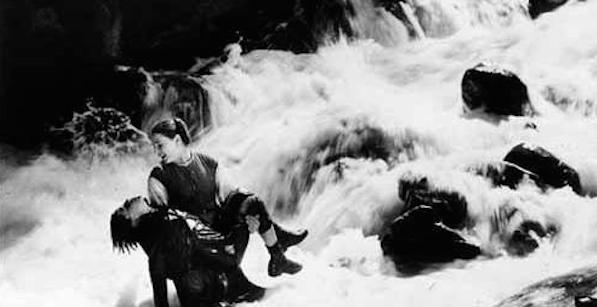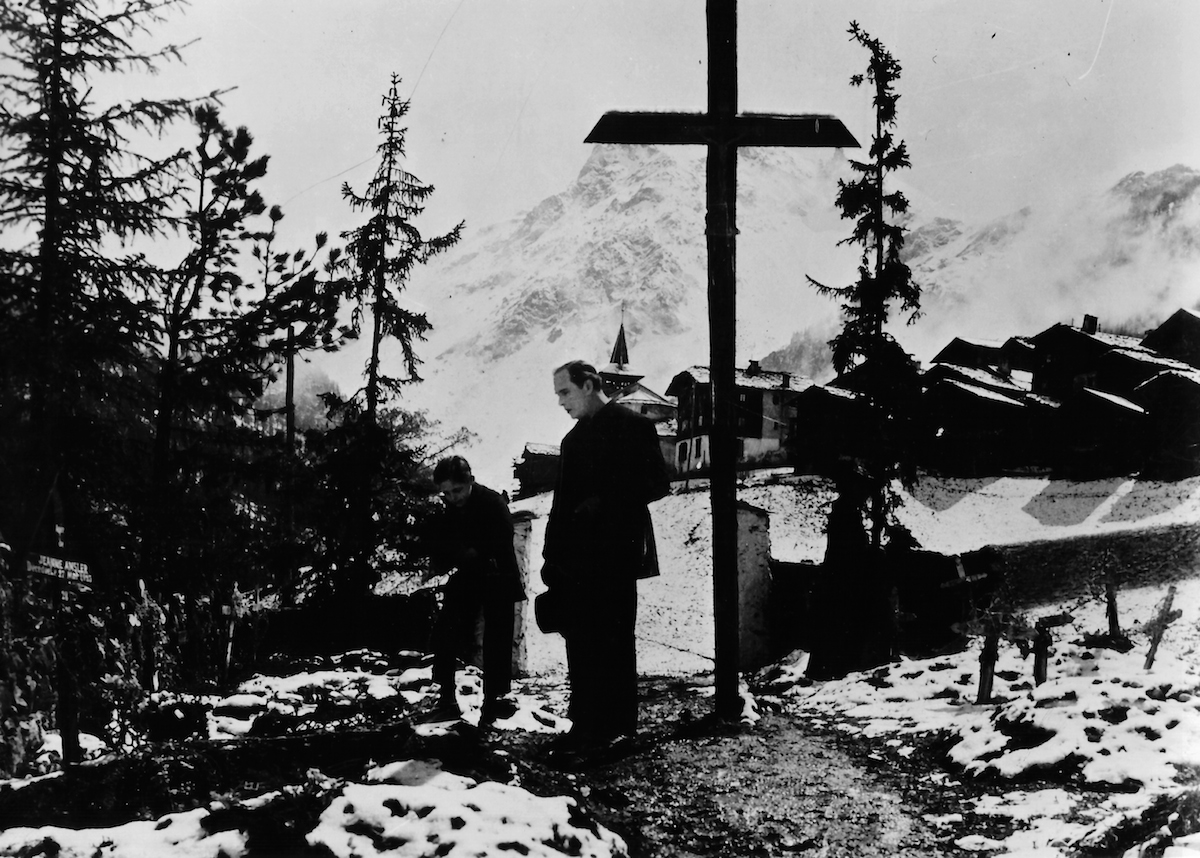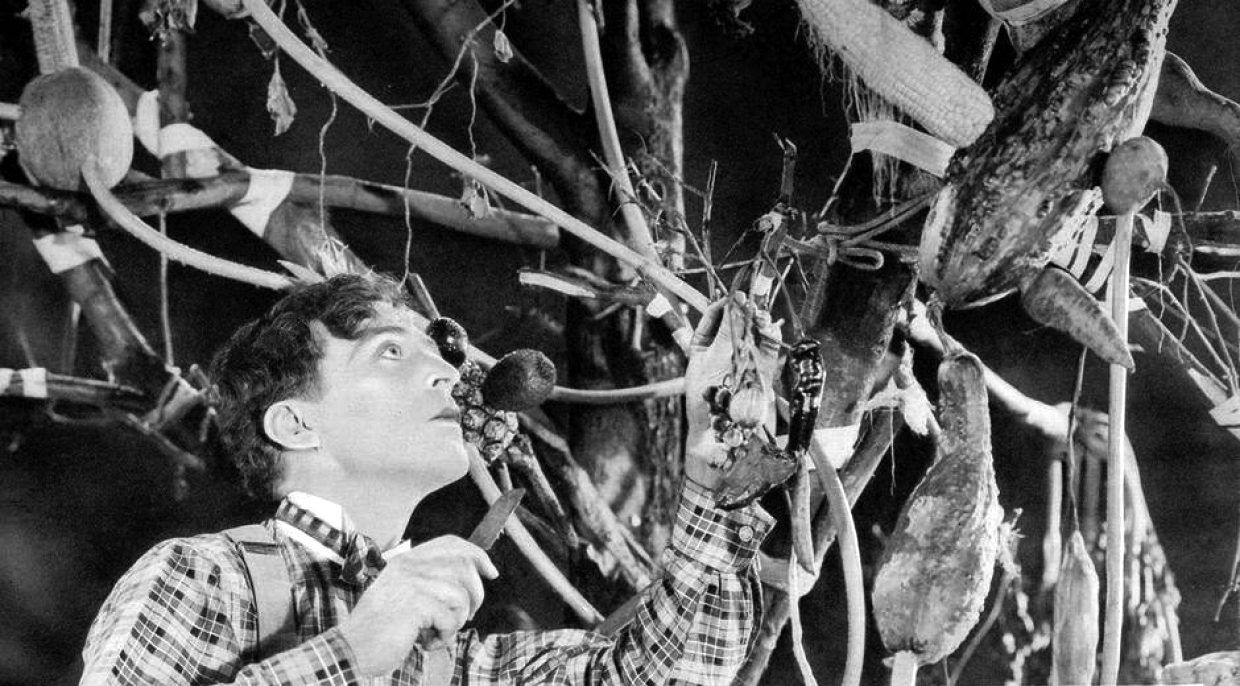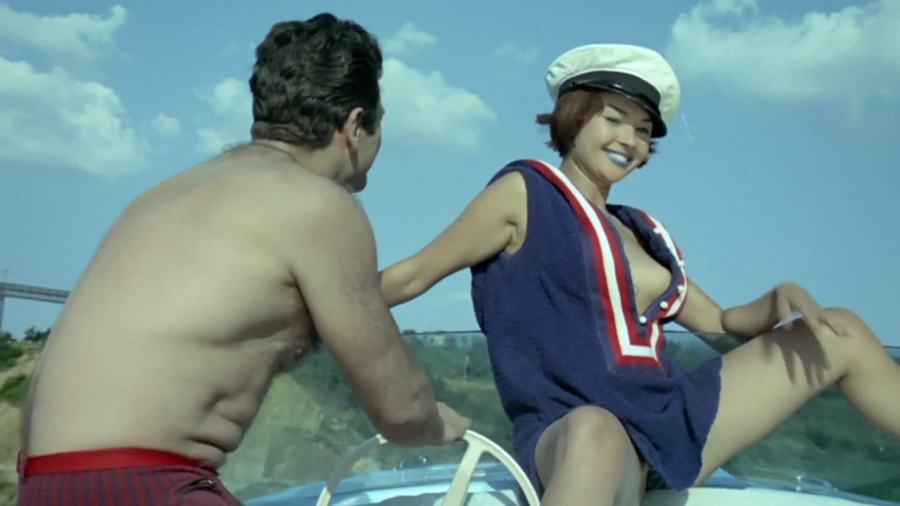
Serge Bromberg started collecting films as kid. “I have been a film buff since the age of eight or nine. I used to buy films from Blackhawk and Castle and all those companies in America and in France when I was a teenager and watch those films and show those films to my friends. They didn’t care but there were no VCRs, no DVDs.”
In 1985, not long out of college, he turned that passion into his mission. Joining forces with Eric Lange, they created Lobster Films, which has since become one of the preeminent forces of restoration and preservation of classic cinema—silent and sound films alike—in the world. Among its many accomplishments, Lobster is responsible for the preservation of hundreds of films by cinema pioneer Georges Méliès, including the discovery in 1999 of 17 films previously considered lost, and the works of the almost forgotten early animation genius Charley Bowers, and the restoration of early Charlie Chaplin shorts made for Keystone and Mutual and the sole surviving original hand-colored print of Georges Méliès’s landmark A Trip to the Moon. Of more recent vintage, Bromberg tracked down the unseen footage (including reels of unprocessed film) from Henri-George Clouzot‘s unfinished L’Enfer and presented the amazing images in the documentary Inferno.
Serge Bromberg will receive the 2015 San Francisco Silent Film Festival Award for his commitment and contribution to film preservation, which will be bestowed upon him at the world premiere screening of the new Lobster Films-produced restoration of Jacques Feyder‘s Visages d’Enfants / Faces of Children (1925).
I spoke with the Paris-based M. Bromberg via Skype a couple of week before he was to leave for San Francisco. Lobster Films had just suffered a computer crash and he had to take a laptop into the company’s basement breakroom. Behind him were stacks of film cans. “Those are not dummy cans,” he assured me. “They are actually cans of film in the process of being restored.” We couldn’t have a better setting if Cedric Gibbons had designed it.
Sean Axmaker: Congratulations on the award from the San Francisco Silent Film Festival. I understand that Kevin Brownlow will be speaking with you on stage about your work preserving and celebrating silent cinema.
Serge Bromberg: The first time I saw Kevin’s The Unknown Chaplin, it was in 1983 so I was 22 and at that time, finding such stuff and putting it on air, it seemed like a miracle. I just released The Unknown Chaplin in France, I bought the rights to the entire series for Europe. George Bernard Shaw said that the secret to success is to last long enough. Well, we’ve been around for thirty years so I guess that’s long enough.
Axmaker: So much of your work has come to us through DVD or Blu-ray, most of them released in the U.S. by Flicker Alley. I’m a big fan of those releases. They are beautiful and filled with a trove of supplementary material.
Bromberg: Thank you very much. Lots of work. But you know all the work we do here, the only reason we do it, is that you can get these DVDs or see programs on the big screen. I’ve always been frustrated that the early Charlie Chaplin films were considered films for kids. And the reason for that is [they were] not the best prints and the music was cheap or as good as possible in the nineties, but they had been 30 years without restoration and of course much more material had turned up. That Chaplin project was just too enormous.

Axmaker: Tell me about your new restoration of Jacques Feyder’s Visages d’Enfants / Faces of Children.
Bromberg: Not only is this among the best French silent films, for me it is one of the two or three best silent films in the world. The film had been restored in 1993 by the EYE Film Institute, which is the former Netherland Film Museum, with the cooperation of Cinemateque Française in France, Gosfilmofond in Russia, and Cinématèque Royale de Belgique, now called Cinematek, in Brussels, Belgium. In the old day, they took fragments, they assembled them on one big reel, then they made what we call a dupe negative, which is a preservation negative and which is black and white. From that they would create multi-tinted positive prints with a system called Desmet color. Of course, the preservation technologies we had in 1993 were not as good as today and what happened is that one year ago I visited Holland and my friends at the Netherland Film Museum told me, ‘We just inspected the assemblage of Faces of Children and it’s starting to decompose.’ And I thought, we can’t let that decompose without scanning it wetgate so we have the best quality possible. And of course if you scan it then you must restore it, so we searched for a bit more material, we found a bit more material., and from that 4K scan we did a 4K restoration and it will world premiere in San Francisco and it will be absolutely beautiful. The real issue for this film is: How are we going to be there on time? It’s still being graded in the next room and we need to do the subtitling and the screening is in about ten days. It will happen.
Axmaker: I discovered the Charley Bowers comedies from the Lobster DVD, which was released by Image here in the U.S. But I’ve never seen them on the big screen before.
Bromberg: What you have here [on the Image DVD set] is the restoration we did in 2004. At the time it was absolutely unique. Basically, we decided to redo the restoration with digital clean-up because we figured that Bowers needed more. We also rerecorded some music and most of all, we found a few more films. So that’s why we are probably about to rerelease next year a Charley Bowers set in the U.S.
Axmaker: He is such a discovery. I knew nothing about him when I saw my first Bowers short and after seeing it, I wondered how that could be. Seeing that incredible creativity and ingenuity of a kind I’d never seen in silent films before was amazing.

Bromberg: Neither had I. We found a print in the late 1980s, a nitrate print of Now You Tell One (1926), and with the French titles we had no clues what it was. We put it on the flatbed and started watching it and after a minute it was obvious what we had, that we were watching something totally different. And now for something completely different, as they say, and that’s exactly what it was. And so over the years we gathered more material and when DVD was still very strong, we thought this is the way to go: Let’s make a Charley Bowers DVD. And the Charley Bowers family popped up and they said that they were so happy that so many films were found. They had never seen any films by Charley Bowers. About two or three years ago, we bought a collection of 85 original stills from Charley Bowers films, including lost films, that will be on the DVD. There will be a slideshow. They are amazing, you see the sets, you see the crew, you see letters saying, ‘Our deal was not renewed with Educational, this is the last film we have to do, what is going to happen with us next week, how am I going to make a living?’ and so on. Those are very, very strong discoveries. And there’s one film that I like very much called It’s a Bird (1930). It’s his only sound film and we were so fortunate we found a 35mm nitrate print in England. All we had so far was 16mm. The sharpness of the image is now completely different because we redid everything and now it’s beautiful.
Axmaker: What are the challenges in the preservation and restoration of silent films today?
Bromberg: You cannot turn back a hamburger into a cow but you can always get an image as comfortable as possible with the digital technologies. Occasional scratches can be removed with, let’s say, Photoshop-like systems, you can stabilize, you can jump from one print to the other within one shot without it being noticeable because the grading is so efficient, and so on. There’s a lot of things you can do and most of all, you don’t lose sharpness or quality by copying the film many times. You can copy it as many times as you want because it’s digital. So the big issue here is not technology. It’s money, because technology is awfully expensive and awfully time consuming.
But it’s most of all to find the films to work from. If you find a film that is already degraded, you won’t get it back as if it was new, so you need to scout around the world and know everyone and ask people. It’s like Indiana Jones and the Lost Films. It’s like a race from one archive to the others, and there’s friendly archives and not-so-friendly archives. There’s even friendly archives who don’t know what they actually have. So every film has its own issues but basically, if you find the camera negative of a film and it has not been censored or cut and it’s still in good shape, then restoration is not such a big deal. A lot of time, a lot of money, but the outcome will be obvious.
Axmaker: One of the most important things that digital tools have brought to silent cinema preservation is the ability to steady the image on the screen. A sharp image and a stable image helps you see it as a film rather than an artifact.
Bromberg: Like it’s new. You see the film. You don’t watch an old film, you see a film as it was shown in the old days. That’s the rub. The problem is that stabilization helps a lot—the very primitive film did move all the time—but of course when it’s stabilized, all of a sudden you see the other defects. It reveals more than it hides. So it’s hard to stabilize and then say, Oh well, that’s enough. You need to go a bit further. The secret is to find the best material, which means that from the first moment to the last moment, it’s a matter of sharing. The first moment we share our prints, our documents, our knowledge among archives, collectors, scholars and so on. This is the material, the nuggets you’re going to make the metal from. And then at the other end of the process, you share with the audience and the audience shares the film with each other. What is great is that it’s a human experience where you’re sharing that entire process to bring the films back to life. And what I mean by back to life is in front of the eyes of an audience. And that’s the best moment.
Axmaker: In the thirty years of Lobster Films, what have been the most exciting discoveries of lost films you were involved in?
Bromberg: You know what my favorite discovery ever is? The next one. That’s not the first time I’ve used this answer but it’s the only answer I can think of. Of course, I can always claim Bowers, Inferno, A Trip to the Moon, Buster Keaton, but in the Lobster Films collection, which includes now the Blackhawk film negatives, there’s now more than 120,000 cans of film. As a very famous American film documentary might say, they are all my babies, so I don’t want to think of one or the other, but some babies deserve more attention. [grabs a film can from the shelf] This is Exploits of Elaine, an American film serial of 1915 and it’s a 28mm original print. That’s the only complete surviving print and we’re about to restore it. That would be one of the important ones. There are 42 cans of ten-minute reels. Wow!
Axmaker: What restorations were the most challenging?
Bromberg: A Trip to the Moon. And there was another one, the first color and sound film, Questions indescrètes / Indiscrete Questions. It was a phono-cine of 1906, that is sound-on-disc synchronized with silent film, and it was with the singer Mayol. It was a Gaumont film and it was restored in the early 1990s and it was really challenging. It was re-synchronized and then we hand-painted the film in the way it was in the old days, with paint and brushes and so on. That was one of the restorations that was commissioned by Gaumont.
Axmaker: How has the search for lost films changed since you began Lobster Films 30 years ago?
Bromberg: What has changed is that information is instant. You need to call someone in the United States, Do you have this, do have that? Hey guys, who has a print of this? You send a general email. That changed a lot. And of course, with this comes the idea that anyone who has a print that is 20 years or older has a treasure in his hands and asks a fortune for it. That’s also another issue, but the result is the same. There are fewer and fewer people interested in classic films, no one is interested in those rusty cans that are all over here [motions to the cans of films behind him in the Lobster break room] and…. What to say? It changed. It changed a lot. I changed also.
The San Francisco Silent Film Festival runs May 28-June 1.




